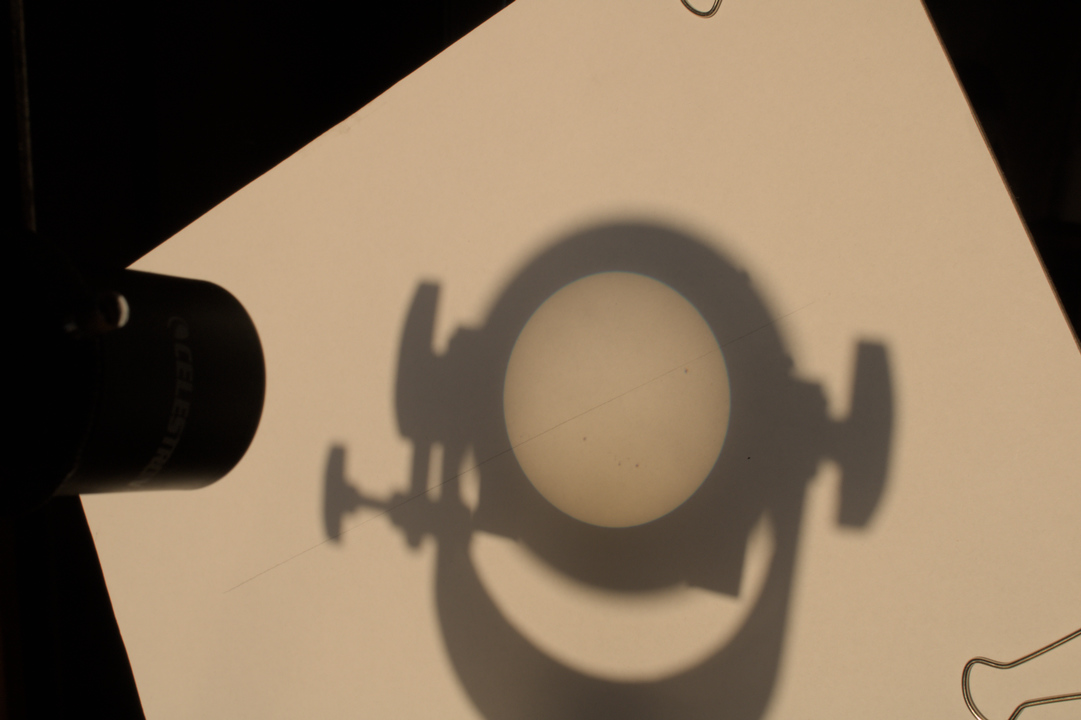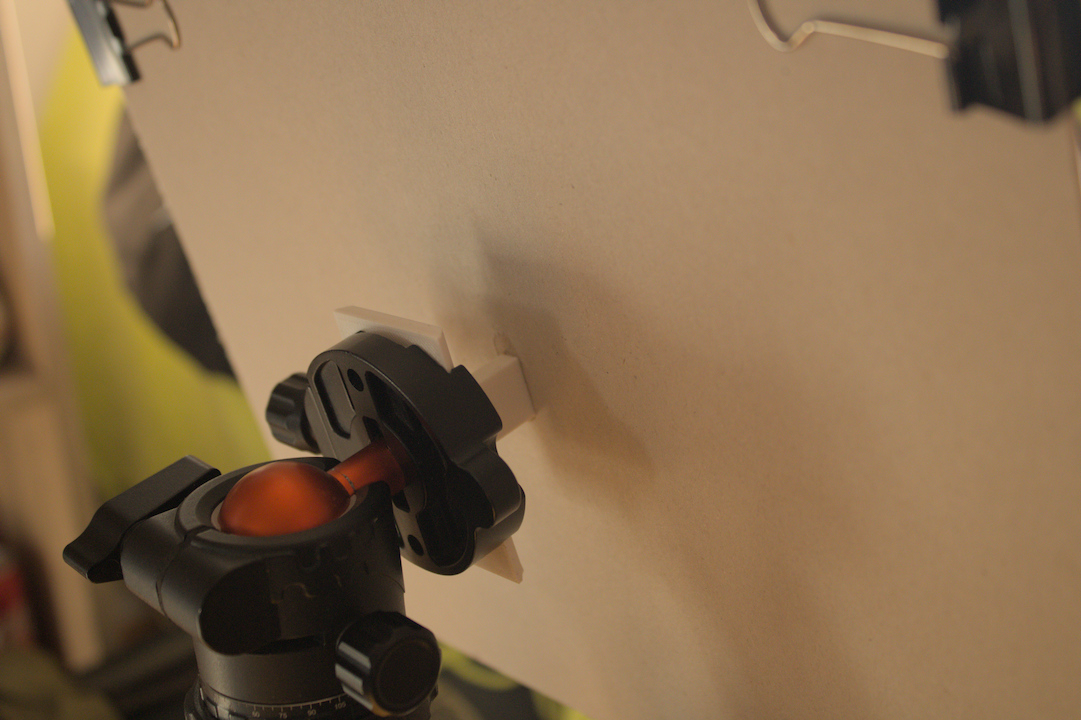Sometime in July last year I found an old tube of a Celestron refractor. I decided to clean it up, mount, oil up, and
point it right at the Sun. This seemed like a good idea, because we were slowly nearing the peak of activity of this
solar cycle. Of course, I prepared a sheet of paper to act as a screen, too. No ants were burned.
I went into this completely unprepared. My first days were off. I tried keeping the time of each observation similar
and track the movement of the Sun. However, I documented it a bit wrong and the results have a lot of wiggle and
inconsistencies.
The other source of errors is that I drew with my hand while looking at the screen. I did it because I was more
interested in the activity itself than the results. This does not mean that I did not pay attention or did not try to
make it correct. I wanted to avoid electronics in general, enjoy my time, and figure out problems as I go without much
external help. When the results were off, I marked them as such in the log. They are in the animations though, because I
wanted to use all samples.
Day by day, I started getting used to drawing the spots. I created templates to streamline the drawings. The problem
with badly documented Sun orientation remained, but I only started getting enough samples to notice it.
Soon enough, I did notice it and I decided to fix it. I started by drawing a straight line on my screen. This helped,
but was pain to calibrate, so I printed a handle to mount the screen on a camera tripod.

My observations usually started by focusing the projection, finding a solid sunspot, placing it on the line, and
waiting. As the spot moved, I would rotate the screen. This gave me a general idea of how the Sun was moving and allowed
me to orient the drawing similarly each time.

This method still involves a lot of wiggle. The screen and tripod weren't really designed to perform such rotation.
Some adjustments were skewing the image. Other adjustments were making the spot leave the line as it was not the centre
of the rotation.
Nevertheless, results were a bit more consistent and better documented. At this point a new enemy started to show up
more often. Clouds. I made some observations despite them but they also got a number of points off me. In September, I
started a new job and it made me change my observation time.
As we reached solar maximum, I got my final sequence. After that I
didn't really have good visibility, because of the snug blanket over my head. As the days went by the Sun stopped
showing up at all because of the terrain and winter.
Now, we are making our way to equinox meaning I might soon get enough visibility to start my observations again. If
the clouds allow me. In the meantime I'm planning to design a better handle to solve some of the inconsistency issues.
I'm also looking for a good way to mark sunspot regions without interfering too much with sequence animations.